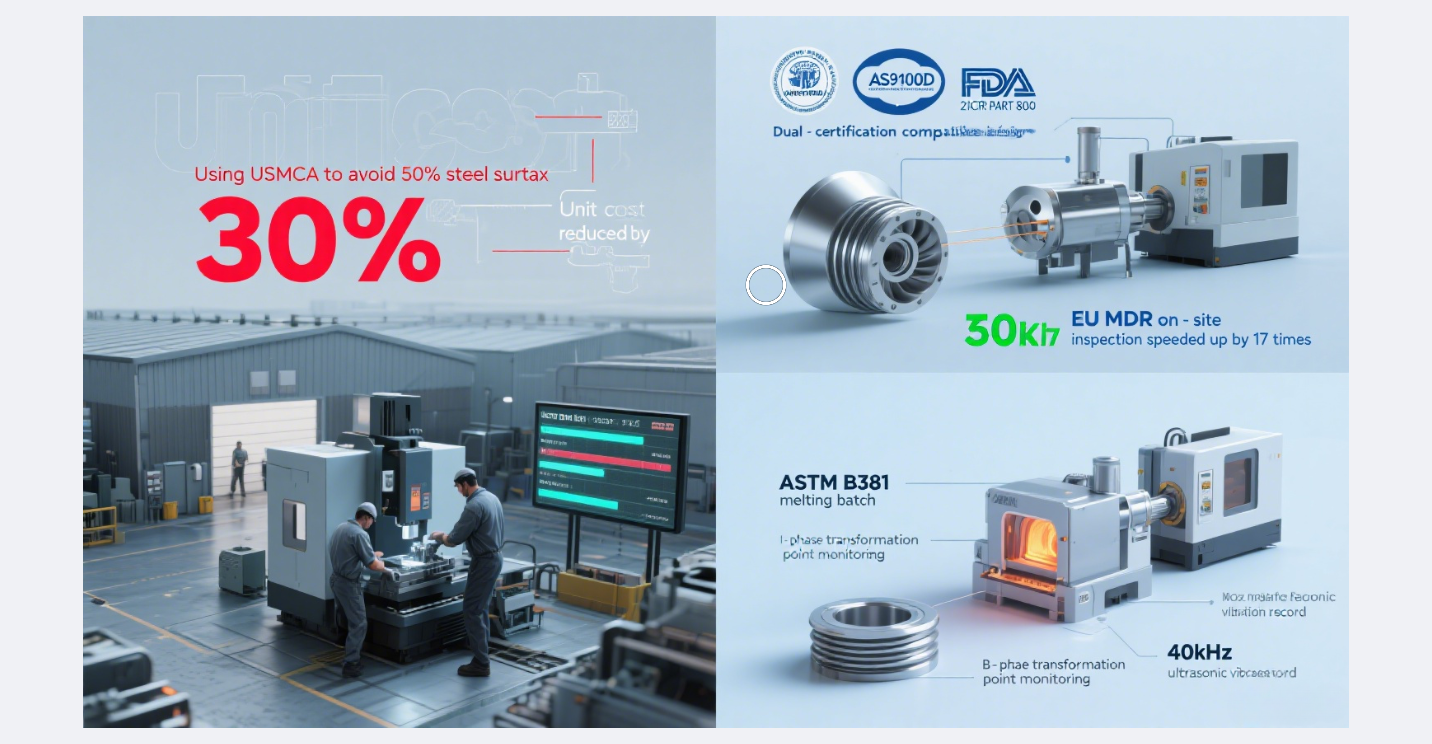
When tariff changes delayed a German automaker’s turbocharger housing delivery, production line downtime cost $23,000 daily—until the China-Mexico dual manufacturing hub slashed total lead time from 42 to 29.5 days. This transformation hinges on tariff structure engineering and logistics digitization synergy:
• Tariff Optimization: Final precision machining in Mexico (35% value-add) utilizes USMCA rules of origin to bypass 50% steel tariffs, reducing unit cost by 30%
• DDP Compliance: Delivery Duty Paid (DDP) terms transfer customs risk to seller. One spindle manufacturer cut border dwell time to 8 hours via electronically filed HTS-embedded manifests
Beyond cost, aerospace/medical clients demand end-to-end compliance:
• QR Raw Material Tracking: Laser-etched QR codes on titanium billets link to melt batches (ASTM B381), heat treatment curves (β-transus monitoring), and machining logs (e.g. 40kHz ultrasonic parameters)
• Dual Certification: Single production batch complies with AS9100D configuration control (change traceability ≤15min) and FDA 21 CFR Part 820 audits
A knee implant supplier completed EU MDR material traceability in 3.7 hours during unannounced audit—17x faster than traditional methods
While sea freight offers lower costs, titanium parts’ vibration sensitivity (<0.5g peak tolerance) demands innovation:

Results from a brake disc supplier:
• Vibration Control: Rail transport peaks at 0.2-0.3g vs. sea freight’s 1.8g average
• Inventory Efficiency: Safety stock reduced from 2.1 to 0.8 months, cutting warehousing costs by 35%
“Cross-border rail isn’t a cost option—it’s an insurance policy for precision components,” noted the firm’s Supply Chain Director
Supply Chain Architecture White Paper Download:www.simituo.com